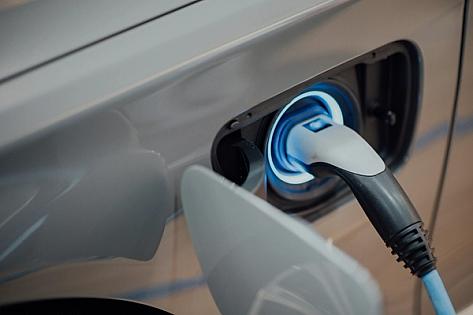
How to Buy a Car: A Simple, Step by Step Buying Guide
Buying a car is one of the biggest financial decisions most people make, and it should feel exciting, not stressful. With the right preparation and understanding, you can approach the process with confidence, knowing what to expect and how to get the best value for your money.
This guide walks you through every step of the car buying process from defining your needs to closing the deal so you can make smart choices and drive away feeling secure and satisfied.
1. Why Having a Step by Step Plan Matters
A clear plan gives you control. It helps you avoid pressure, recognize better deals, and make sure your decision fits both your needs and your budget.
A smart plan helps you:
- Understand what type of car actually fits your lifestyle
- Avoid paying more than necessary
- Stay calm and focused when it is time to negotiate
Buying a car is easier when you break it down into simple, manageable steps.
2. Know What You Really Need
Define What Matters Most
Before you start comparing cars, think about how you will actually use the vehicle. Ask yourself:
- Will this car work for my daily commute, family needs, or weekend trips
- What size and type of vehicle do I really need
- Which features are must haves and which are nice to have
Getting clear on your priorities helps you stay focused on what truly matters instead of being distracted by extras.
Set a Realistic Budget
A car’s total cost goes beyond the price tag. When building your budget, include:
- Taxes, registration, and insurance
- Fuel and maintenance
- Financing costs and possible depreciation
If you plan to trade in your old vehicle, research its value first. Knowing your trade in worth gives you a clearer picture of how much you can comfortably spend.
3. Do Your Research Before You Visit a Dealership
Knowledge is your best tool when buying a car. Spend time researching different makes, models, and trims to understand what fits your needs and price range.
Compare Options and Prices
Look up local listings, check reviews, and compare pricing from several dealerships.
Check Vehicle History for Used Cars
If you are buying used, always review the vehicle history report. It will show past ownership, accidents, and maintenance records. This step protects you from hidden problems and unexpected costs later.
4. Choose the Right Time to Buy
Timing can have a big effect on what you pay. Dealers often have sales goals to meet, and these deadlines create opportunities for buyers.
- End of the month: Sales teams are motivated to close deals and may be more flexible
- End of the quarter: Dealers push to meet performance targets, leading to stronger incentives
- End of the year: December often brings the biggest discounts as dealerships clear inventory for new models
- Midweek visits: Mondays through Wednesdays tend to be quieter, giving you more attention and time to negotiate
If you are not in a rush, plan your purchase around these periods to make the most of potential savings.
5. Visit Dealerships With Purpose
When you are ready to see cars in person, visit dealerships that are known for transparency and good customer service. Be clear about what you are looking for and what you can afford.
Test Drive Thoughtfully
A test drive should do more than show off features. Use it to see how the car fits your real life.
- Does it feel comfortable for your daily drive
- Is the visibility good and the ride smooth
- Do the brakes, steering, and safety features respond as expected
Bring a friend if possible. A second opinion can help you notice details you might miss.
Ask the Right Questions
Before committing, ask:
- What is included in the listed price
- Are there any dealer fees or extras I should know about
- What warranties or return options are available
Clear communication helps you avoid surprises later.
6. Negotiate Fairly and Confidently
Negotiation does not have to be stressful. It is simply a conversation to find a fair price for both sides.
Keep these points in mind:
- Know the market value before you walk in
- Be polite and confident, not defensive
- Focus on the total cost, not just the monthly payment
- Take your time and never sign anything you have not fully reviewed
If you feel pressured, pause and think. A fair deal will still be there when you are ready.
7. Understand Financing Before You Agree
Financing can make or break your deal. Knowing your options beforehand puts you in control.
- Get preapproved through a bank, credit union, or online lender. It sets expectations for your rate and budget
- Compare offers between lenders and dealerships. Even a small difference in interest rate can save you hundreds
- Know your credit score and how it affects loan terms. Improving it before applying can qualify you for better rates
Avoid focusing only on the monthly payment. A lower payment may come with a longer loan term and a higher total cost.
8. Review and Finalize the Deal
Before you sign, go through the contract line by line. Make sure every detail matches what was discussed, and do not hesitate to ask for clarification.
Check for:
- Extra add ons or warranties you did not agree to
- Correct pricing and loan details
- Documentation for the title, registration, and warranty coverage
Read everything carefully and take your time. Once you sign, the contract is legally binding.
9. After You Buy
Your relationship with the car continues after purchase.
- Follow the manufacturer’s maintenance schedule
- Keep records of all services and repairs
- Review your insurance coverage regularly
- Stay aware of recall notices for your make and model
Taking care of your car helps it last longer and hold more value over time.
Frequently Asked Questions
Is it better to buy new or used
New cars come with warranties, the latest features, and no previous wear, but they cost more and depreciate faster. Used cars offer better value, though you should always check condition and history carefully.
When is the best time to buy a car
The best times are usually the end of the month, quarter, or year when dealerships are motivated to meet goals. Holiday weekends can also bring special promotions, but end of year sales often deliver the biggest discounts.
How much should I put down
A down payment of around twenty percent is a solid starting point. It can lower your loan amount, monthly payments, and total interest.
What should I bring to the dealership
Bring your driver’s license, proof of insurance, preapproval documents, and trade in paperwork if applicable. Being prepared speeds up the process and shows you are serious.
Final Thought
Buying a car should feel empowering, not overwhelming. When you take time to research, plan, and understand your options, you stay in control of every decision.
Whether you are shopping for your first vehicle or upgrading to something new, remember that preparation and clarity are your best tools. The more informed you are, the smoother your experience will be and the happier you will feel when you drive away.
Related Articles

How to Bargain with New Car Dealers and Get a Better Price
Car Buying Tips and Advice
Learn how to bargain with new car dealers using smart, practical strategies. Discover how to research pricing, compare offers, time your visit, and negotiate with confidence.

Thinking About Buying an EV in 2025? Here’s What You Need to…
Car Buying Tips and Advice
2025 electric vehicle guide: Compare EV models, charging options, range, maintenance, and insurance costs before buying

Best Time to Buy a Car: Spring Sales vs. Year-End Clearance
Car Buying Tips and Advice
Wondering when to buy your next car? Discover how spring sales and year-end deals compare, and how AutoFinder.com helps you save year-round.